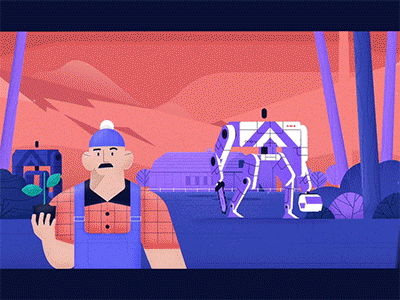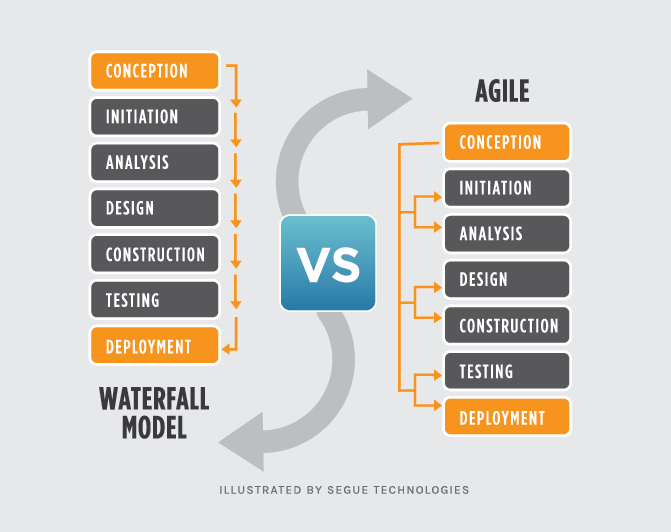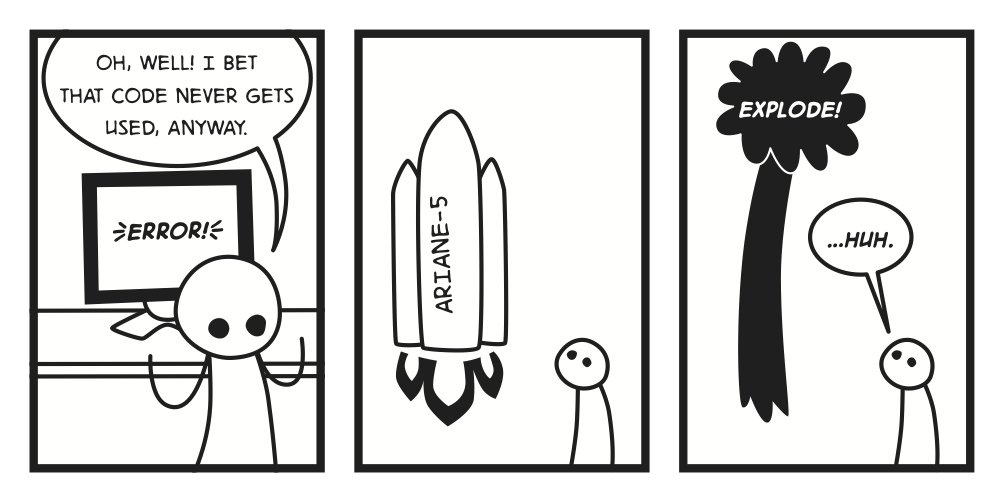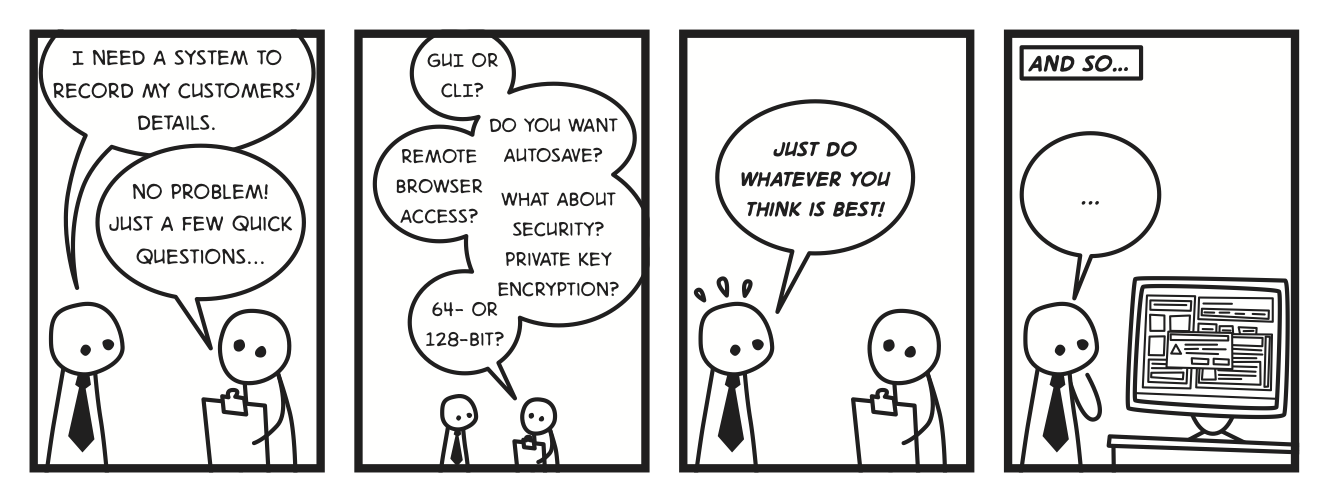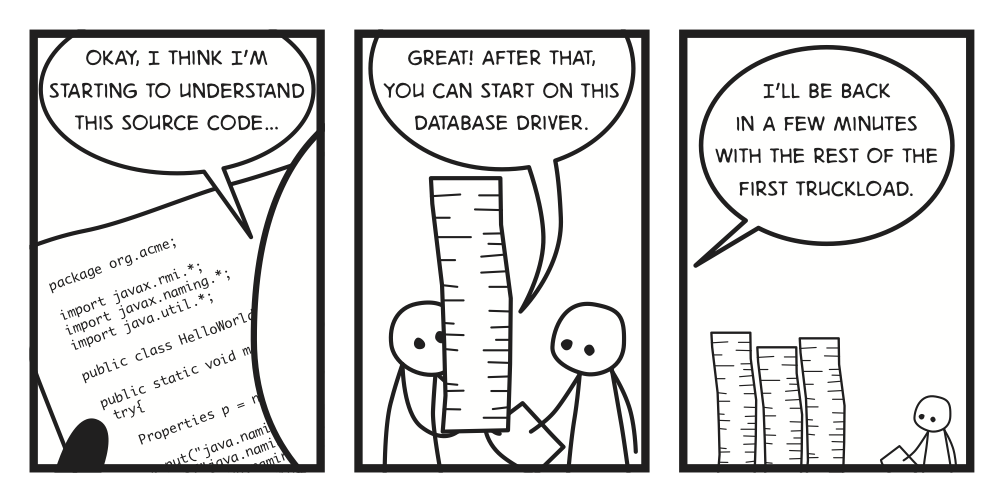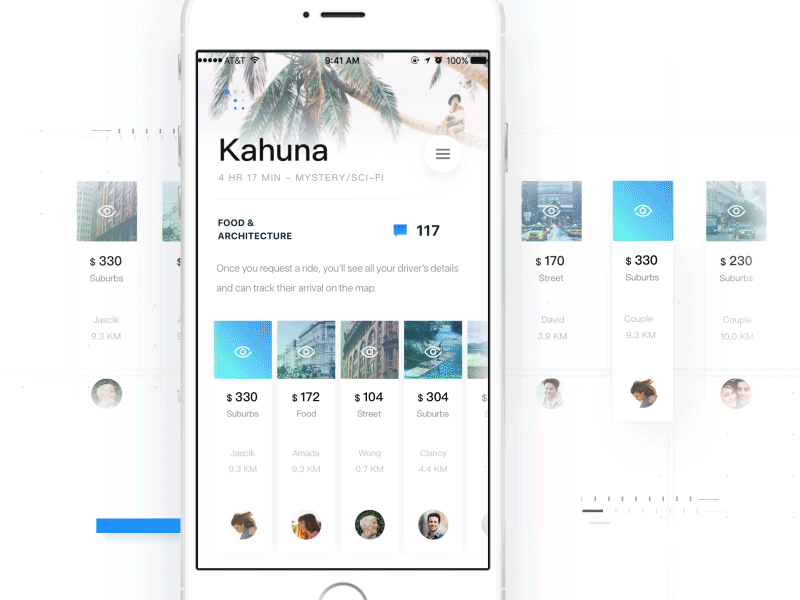Making the Most of Your Business’s Web Projects
In this day and age, a strong web presence is vital for the success of any business, big or small.
However, the smaller your business, the more of an impact a great website can have – and,
unfortunately, the harder it can be to pull off.
Large companies often have their own software departments dedicated to keeping the website
running well, or else they’re able to hire consultants or other massive outside help. Small
business owners are usually left to figure out their site all their own. Unless you happen to have
marketing and front-end development skills already, this can be a daunting task.
Fortunately, there are ways small business owners can boost their website and bring in a wider
customer base. Here’s a look at just a few of the things you can do to make sure your website
shines:
Focus on User Experience
There are few things more frustrating than trying to learn more about a company and finding a
website that’s difficult to use. There are plenty of web design flaws that can harm the user
experience.
For example, drop-down menus often have too small an activation box, meaning if your mouse
is a pixel too far to the left or right, you can’t use it at all. This is doubly frustrating if the dropdown
itself has a narrower box than the text to pull the menu down. Other common issues are
dead-ended link paths, difficult-to-find contact pages, and too-busy or too-barebones pages.
If you don’t have web design knowledge, it can be difficult to fix these kinds of user experience
issues. Consider hiring a freelance graphic designer who can make sure your site works and
looks its best. When looking at graphic designers, be sure to focus on candidates who are
familiar with graphic design tools, are fully versed in web design and who are noted as being
easy to work with. The right job board can connect you with top-notch candidates and provide
reviews so you aren’t in the dark about their abilities.
Tell Your Story
One of the best things your website can do for your business is to tell your story. Each and
every business has followed a unique path to where it is today. Find a way to have your site
show potential clients and customers what makes your business unique. Focus on answering
questions like why you decided to start the company, what drove your initial efforts, and what
kind of things you’ve learned along the way. This humanizes your company and helps people
relate to you as more than a logo.
You can do this with text, but a video will go the extra mile to share this information. Whenever
you have a video project, make sure to include accurate captioning. This expands the usability
of the videos, making it accessible to the hearing impaired. It also keeps your video watchable
regardless of whether or not the player (or the viewer) lacks a good audio connection. Not sure
how to add captions yourself? Check out services that can do it for you. If you do outsource this,
make sure to pick a service that promises a 100% guarantee. You should also make sure the
company provides captions that are compliant with FCC and ADA standards.
Telling your company’s story is an ongoing process. For many businesses, it makes sense to
have a regularly updated blog that shares new information about your company. You can also
use this space to show off any knowledge that positions you as an industry leader and boosts
your SEO.
Turn Visitors Into Customers
Finally, make sure your website is designed to turn curious into the hooked. If you get plenty
of hits on your site, but your company isn’t gaining more business, take a look at your site. Make
sure there are clear ways to sign up, contact you, or find your business (if it’s a brick-and-mortar
company). This way, you know that interested people can make the most of your offerings.
A website is a must-have for a business in the modern era. Make sure your web-based products
are doing everything they can to boost your company and bring in the clients you deserve.
Facebook's Launching A New Crypto-Currency!
Facebook is finally ready to reveal details about its cryptocurrency codenamed Libra. It’s currently scheduled for a June 18th release of a white paper explaining its cryptocurrency’s basics, according to a source who says multiple investors briefed on the project by Facebook were told that date.
Meanwhile, the company’s Head of Financial Services & Payment Partnerships for Northern Europe Laura McCracken told German magazine WirtschaftsWoche‘s Sebastian Kirsch that the white paper would debut June 18th, and that the cryptocurrency would indeed be pegged to a basket of currencies rather than a single one like the US dollar to prevent price fluctuations. Kirsch tells me “I met Laura at Money2020 Europe in Amsterdam on Tuesday” after she watched fellow Facebook payments exec Paulette Rowe’s talk. “She told me that she wasn’t involved in what David Marcus’ [Facebook Blockchain] team was doing. But that I’d have to wait until June 18th when a white-paper was supposed to be published to get more details.” She told him she thought the date was already a publicly known fact, which it wasn’t.
Facebook declined to comment on any news regarding its cryptocurrency project. There is always a chance that the announcement date could fluctuate if snafus with partners or governments arise. One source says Facebook is targeting a 2020 formal launch of the cryptocurrency
The debut of Libra or whatever Facebook decides to call it could unlock a new era of commerce and payments for the social network. It could be used to offer low or no-fee payments between friends or remittance of earnings to family’s of migrant workers abroad who are often gouged by money transfer services.
To continue reading the full article please click here.
Google’s latest app, Rivet, uses speech processing to help kids learn to read
Rivet, a new app from Google’s in-house incubator, wants to help children struggling to read. The app hails from Area 120 — Google’s workshop for experimental projects — and includes over 2,000 free books for kids as well as an in-app assistant that can help kids when they get stuck on a word by way of advanced speech technology.
For example, if the child is having difficulties with a word they can tap it to hear it pronounced or they can say it themselves out loud to be shown in the app which parts were said correctly and which need work.
There are also definitions and translations for over 25 languages included in the app, in order to help kids — and especially non-native speakers — to better learn reading.
For younger readers, there’s a follow-along mode where the app will read the stories aloud with the words highlighted so the child can match up the words and sounds. When kids grow beyond needing this feature, parents can opt to disable follow-along mode so the kids have to read for themselves.
While there are a number of e-book reading apps aimed at kids on the market today, Rivet is interesting for its ability to leverage advances in voice technology and speech processing.
Starting today on Android and (soon) iOS, Rivet will be able to offer real-time help to kids when they tap the microphone button and read the page aloud. If the child hits a word and starts to struggle, the assistant will proactively jump in and offer support. This is similar to how parents help children to read — as the child reaches a word they don’t know or can’t say, the parent typically corrects them.
Rivet says all the speech processing takes place on the device to protect children’s privacy and its app is COPPA-compliant.
When the child completes a page, they can see which words they read correctly, and which they still need to work on. The app also doles out awards by way of points and badges, and personalizes the experience using avatars, themes and books customized to the child’s interests and reading level.
Other surprises and games keep kids engaged with the app and continuing to read.
To read the full article, please click here. This article was written by Sarah Perez of TechCrunch. We curate the top content from the web and provide you with a preview, with a link to the full article. We did not create this article - @SarahinTampa
[TechCrunch Article] Journey launches its real-time group ‘Peloton for Meditation’
Sitting silently with your eyes closed isn’t fun, but it’s good for you… so you probably don’t meditate as often as you’d like. In that sense, it’s quite similar to exercise. But people do show up when prodded by the urgency and peer pressure of scheduled group cycling or aerobics classes. What’s still in the way is actually hauling your lazy butt to the gym, hence the rise of Peloton’s in-home stationary bike with attached screen streaming live and on-demand classes. My butt is particularly lazy, but I’ve done 80 Peloton rides in four months. The model works.
Now that model is coming to mindfulness with the launch of Journey LIVE, a subscription iOS app offering live 15-minute group meditation classes. With sessions starting most waking hours, instructors that interact with you directly and a sense of herd mentality, you feel compelled to dedicate the time to clearing your thoughts. By video and voice, the teachers introduce different meditation theories and practices, guide you through and answer questions you can type in. Each day, Journey also provides a newly recorded on-demand session in case you need a class on your own schedule.
” ‘I tried Headspace’ or ‘I tried Calm .’ With a lot of the current meditation apps, people go on but they drop off very quickly,” says Journey founder and CEO Stephen Sokoler. “It means that there’s an interest in meditating and having a better life but people fall off because meditating alone is hard, it’s confusing, it’s boring. Meditating with a live teacher who can connect with you and say your name, who makes you feel seen and heard makes a huge difference.”
To read the full article, please click here. This article was written by Josh Constine of TechCrunch. We curate the top content from the web and provide you with a preview, with a link to the full article. We did not create this article - @JoshConstine.
Built In LA’s 50 Startups to Watch in 2019
Photo ownership belonging to BuiltInLA
The Southern California tech scene grew by leaps and bounds in 2018. Funding rounds ballooned, exit prices surged, and a growing list of companies from premier tech hubs like San Francisco, Boston and Seattle opened shop and laid down roots across Southern California. It was also a big year for LA from a diversity perspective — look no further than the groundbreaking PledgeLA initiative — and the city gained some global attention as well: CB Insights ranked Los Angeles one of the top 25 cities for tech innovation in the world.
There’s no doubt that between LA, Orange County and Santa Barbara, the SoCal ecosystem is poised for even bigger, more innovative work in 2019.
For the fifth time annually, Built In LA culled through public records, fundings, news stories and more to compile this list of 50 young companies — all less than five years old — that we think are poised to make a real impact on the Southern California tech scene this year and beyond.
We (24 Hour Designs) think the list is quite intriguing. Perhaps you already know about these companies or have seen them in the news?
If you want to see the full list, check it out on BuiltinLA.
This article was written by Hanna Levy
Do This One Thing And You'll Be Better Than 99% Of Startups
Why You MUST Design Before Building Your App
You would never build a home without blueprints, permits and consulting the needed experts to make sure the home would be a safe and viable space. The same should be true for app development! By jumping into construction before the development of a plan, you open yourself and your app to a wide range of obstacles and the potential for failure. It’s baffling to see this happen, but unfortunately it still does. In the world of rapid prototyping, it’s essential to have a solid plan of attack – a thorough and vetted blueprint, if you will – to see each project through successfully.
By simply taking the time to design your app before development you gain so many benefits (below):
Pitch to investors. Raise money.
With a detailed plan, you’ll be able to pitch your early-stage concept to seed round investors, creating interest and reducing the amount of money you need to put out up front on your own. This is a critical step and reduces risk on your end. Plus, with the money raised, you’ll know exactly what you can afford, so when you get quotes from developers, you’ll know which will fit within your budget.
Show Off Your Designs.
Designing first allows you to also develop a website which is an indispensable tool when it comes to building interest for your new app. If you create your website before diving into development, it will help you with the above-mentioned pitching to investors and raising money, as well as building a community prior to launch (more on that next). A website shows that you’ve got a solid idea and it gives you the opportunity to show off your designs to anyone interested in learning about your app.
Build Excitement.
That website you just built? Use it to let people know you’re coming soon, and start building interest and excitement around your new app. This will help ensure you have a strong start at the time of launch with a potential pool of first adopters. A community is also a good resource providing an avenue to reach out to those in your community that would most likely use your app. Ask for their help and get their honest input. Maybe you’re missing a key feature that everyone wants, or perhaps the user interface is confusing. Get this UI/UX information now so that this valuable feedback can be easily included in the design.
Save Time.
With a solid plan and the needs of your new app laid out, the app will be executed more efficiently, saving you months of wasted time. You’ll already have thought of and overcome any roadblocks in the design or functionality, so there won’t be any surprises. Additionally, with the parameters already honed, you’ll know if everything is feasible before starting, since you’ve already thought through everything that needs to take place to make your app work. Are there any security or privacy concerns? What about support once it’s done? You’ll have already tackled these questions, so they won’t hold up or set back your development.
Save Money.
Time is money, and truer words have never been spoken when it comes to development. The more time the developer spends, the more money it will cost. With a thoughtful plan, developers will know exactly what you need. You’ll receive more accurate project estimates by providing a list of fully visualized requirements. You’ll also reduce the likelihood that certain items will have to be revisited or redeveloped. The cost of these types of setbacks can really add up! Of course, there’s usually something unexpected, but with a solid plan and an accurate estimate, you’ll reduce the chance of it being a budget buster.
Planning your app before heading to development is a vital step to ensuring success. Creating this blueprint will allow you to efficiently build your app with the best strategy available and reduce risks that could arise. Even after knowing this, some people still choose to skip the design step and dive right into development. Don’t be one of them – optimize your outcome with a plan!
Why we write
In the “24Stories Blog” we provide you with relevant industry topics meant to help your tech business grow. We help our clients design web and mobile apps as a short-term value add, but our content is meant to help you (if you use technology to scale your current business model) long-term. We hope the information increases your knowledge, skills and ability to build the best applications in the world use industry standard best-practices. After reading our content we hope that you can become more “tactical”, by immediately putting what you learn to task. Thanks for reading!
Future-Proofing Your Business
How a technological implementation may help you remain relevant in a world of startups and rapidly growing revenues.
Technology is spreading
The cost of application design and development has decreased dramatically over the last decade making it more affordable than ever. Interestingly, these (lowered) costs are still incredibly high and a large percentage of businesses must carefully consider the upside of a steep investment.
The goal of this discussion is to help you identify what sector your business lives in and its relevance to the topic of technology and design. Additionally, we strive to answer key questions such as:
What does a technological implementation mean for your business?
How can you estimate costs?
What are some examples of companies that have had success making similar investments?
Emerging-Adaptations
An "emerging-adaptation" is a business that has the capability of scaling their current processes through technology, while also introducing the ability to expand into newer markets across the world.
Emerging markets present an enticing opportunity for new business growth and opportunity, but we are often challenged by the nature of the different markets, as they are inherently different from what we are accustomed to. For example, an English teacher may not be as valuable in America and London as it may be in Asia-Pacific countries.
Taking this example one step further, that same English teacher may be able to scale her business 10-fold by bringing her practice online which makes the prospect of having more clients, more feasible. If this teacher can successfully make adjustments to her process she not only can scale her business through, but also service more people in more places around the world, now making her not-so-interesting job, incredibly interesting to anyone willing to hear her story.
Teacher with Future Technology
The truth is, not every business can be a Facebook, or an Amazon. Some business owners provide a high-level of value to a smaller amount of people through their own small-business, which is enough to enjoy a high quality of life. The daunting question that remains is that while the chances are high that you will be around for the next 10 years, "will your business be able to survive into the next decade?".
Technology & Scale
When most people think of applications and technology they think of the Silicon Valley tech giants. While everything starts out as an idea, it's hard to know if your venture will pan out and you could wind up spending a lot of money. You should always try, but it's very easy for someone to fall into the trap of "chasing the rabbit down the hole". Instead of searching for the unknown, it may be more valuable to assess the skills and resources that you currently have available to you. What skill or asset has a client been willing to pay you hand-over-fist? What makes you unique, and how do you do it better than anyone else?
Once you've identified something that makes you unique, which is the best part, then assess how that can add value to someone else's life. Perhaps you've already gotten this down as a small business owner or seasoned entrepreneur? If so, now is the time to figure out how you can form a marriage between your current business practices and a new form of technology!
In summary, you don't have to re-invent the wheel when it comes to technology. It's better to use technology to scale what you already have, rather than searching; wondering if you'll ever be able to create something that the world can use. If you solve a problem for one person, believe it or not, it can be scaled, it can be revolutionized, globalized and scaled to help far more than just one person.
Education is Scaleable
Agriculture is Scaleable
Medicine is Scaleable
Baking is Scaleable
The Different Types of Tech
Not all methods of technology are built the same. Let's begin by reviewing some of the more common forms of applications and where they might be implemented:
Mobile Applications - IOS (iPhone, iPad), Android (Any non iPhone), Microsoft (Not very relevant), Amazon (Kindle).
Desktop Applications - Mac (Apple), PC (Any non Mac), Other (not really sure)
IOT Applications - Devices like Nest, Ring, Amazon Echo, Google home, or any other Smart Device that isn't software
Web Applications - Custom platforms like a SAAS (Software as a Service). Think Salesforce, Zendesk, Squarespace
Artificial Intelligence & Robotics - SkyNet.
I promise you, there are hundreds more. We've barely scratched the surface, but the most important thing to take from this incredibly non-comprehensive list is that there are many different use-case scenarios as to how and why you might consider using technology for your business. Perhaps you already now, or at least have an idea of the technology you've considered. Most individuals automatically go to mobile applications as a first thought, mostly because we've been trained as a society to think that iPhone apps are what make people Billionaire's.
Not only is this the furthest thing from the truth, in fact most successful companies didn't even start with a mobile app, some started with a website, like Facebook and Amazon. If you are thinking Tinder, Snapchat, Whisper, Instagram (all social) then you might be right, but ask yourself this one question, "Is your business a social network or dating service?".
Investment Justification
It would be a waste of your time to get into the discussion of why we are in business in the first place, but irrational exuberance has led us blindly down the very same aforementioned rabbit hole! Which brings us back to this conversation. The average cost to build an application in the United States can range from $30,000.00 - $250,000.00 for an MVP, depending on how substantial the product may be. Fear of missing out on opportunities often times scares people away from the concept of a minimum viable product, forcing costs through the roof (Think Facebook 2004, not Facebook of today).
Another important fact about technology is that it's highly comparable that of starting a new family. The technology doesn't die, it doesn't go away, and the costs will continue to pile up especially as you grow. One false move and KABOOM! It may all come crashing down, scarring your business, finances, relationships and pride on the way down. You know your business better than anyone else, so when making a decision to add technology into the mix you must be prepared.
The goal isn't to scare you, but to enlighten you on the many things that a lot of first time technology entrepreneurs don't realize! If there was one thesis that could summarize our recommendations, it's to proceed cautiously, one win at a time!
Success Stories
Company Name:
Who they are:
WeVorce simplifies the divorce process and assures affordability. The company seeks to protect spouses, children, and assets by dividing the divorce process into five patented steps.
What they did:
Divorce law is nothing new, in fact according to History.com, the first recorded divorce in the American colonies was that of Anne Clarke and her husband Denis Clarke of the Massachusetts Bay Colony on January 5, 1643. The divorce was granted by the Quarter Court of Boston, MA on the grounds that Denis Clarke abandoned his wife to be with another woman.
Many of us look at the legal process and presume that every case is unique in it's own way, making it incredibly hard to manufacture and scale. While this is true, many practitioners have been following a specific set of steps or "practices" to ensure a quality outcome for their clientele for many years. If a successful divorce procedure is contained within 10-steps, one can assume that every case has a +/- of one or two additional steps, which in this case would be considered the variant(s).
Believe it for not, even the process of calling a taxi cab has a +/- of variation to each ride. Sometimes cabs are late, sometimes there is more traffic than expected, perhaps the vehicle isn't up to specification, or the driver is experiencing difficulties of their own.
Why it's relevant to you:
Every industry, practice or workflow experiences variations, but if you have the core logic of your business intact, even something as mysterious as divorce law can be integrated with technology and scaled to the masses!
Company Name:
Who they are:
KitSplit operates an online rental marketplace for creative equipment. The equipment available can include cameras, lights and lenses, but also VR gear and drones. Renters get access to this equipment for a lower price, while the owners get to make some extra money from equipment when they’re not using it.
What they did:
Considering themselves the Airbnb of Camera Rentals, KitSplit has built a community of safe digital camera and equipment rentals more accessible to the world. The process is strategic, yet stringent, which includes verified accounts, insurance applications, and a transparent pick-up and drop off process.
Borrowing a friends camera could be as simple (or difficult) as asking. While many programs were already in existence such as University rental programs or local shops, the ability to share a $2,000.00 (or more) piece of fragile equipment to a complete stranger was almost unheard of! While this business concept isn't really "innovative", or "world-changing" there was a clear path to success, which included safe-guards, validity and trust. Take all of these interpersonal concepts and build a platform tailored to ensuring that these processes are enforced is where the innovation comes to play.
Why it's relevant to you:
A deep understanding of your business logic is a great first step to creating an "emerging-adaptation". In the case KitSplit, the technology was used as a form of quality control rather than a necessity to perform the actual business task. Many of the best marriages between technology and business are the ones that already have solid processes in place! Did you know that one of the first examples of scale at the business logic level were pizza delivery shops Dominoes and Papa Johns!
Company Name:
Who they are:
Postmates is a delivery service that connects with millions of individuals around the world who basically want anything picked up and delivered to them. Whether it's an entire cake, a pair of sneakers, suit, meal, it doesn't matter. "They Get it".
What they did:
Founded in 2011 as a delivery and logistics company, Postmates started as an initiative that competed with Amazon for deliveries in San Francisco. The placed heavy focus on helping small-business merchants deliver their goods to their clients, especially in locations that weren't as accessible. Unlike most foundational service providers, Postmates used technology at the onset of their business for a process they felt familiar with.
Why it's relevant to you:
The service you provide doesn't matter, what's most important is what you currently do and how a marriage with technology can help you grow, which ultimately can justify your investments over time. Postmates is one of the few businesses that has survived all of this time because their customers are paying customers. If you have paying-customers, you are already light-years ahead of your competition, and other entrepreneurs who are looking to start their journey.
Why we write
In the “24Stories Blog” we provide you with relevant industry topics meant to help your tech business grow. We help our clients design web and mobile apps as a short-term value add, but our content is meant to help you (if you use technology to scale your current business model) long-term. We hope the information increases your knowledge, skills and ability to build the best applications in the world use industry standard best-practices. After reading our content we hope that you can become more “tactical”, by immediately putting what you learn to task. Thanks for reading!
THE SECRET TO SUCCESS: AN INTERVIEW WITH ONE OF THE WORLD’S MOST SUCCESSFUL BUSINESSMEN
Inspector Gadget
Known for his many creations, like the wildly popular Inspector Gadget, Andy Heyward has achieved a level of success that most can only dream of. You may not realize it, but it is highly likely that you’ve had the opportunity to enjoy one of his many creations. Recently, we had the opportunity to sit down and interview the living legend himself. He was kind enough to offer us guidance, mentorship, and thoughts on what’s necessary to be successful in today’s business world.
THE INTERVIEW:
“Describe your career in your twenties”?
Andy: “Well in my early 20’s, I just graduated college, and like many of us, I was searching for the right career. I wanted a job where I could support myself in a way that was enjoyable. I wanted something that gave me creative satisfaction, and allowed me to earn a good living. What I really wanted to become at that time was a writer, so I spent a lot of time writing spec scripts. In fact, I think I may have written at least 100 of them, but unfortunately I never sold any of them. The lesson I got from doing that was to never give up, keep trying, and continue pursuing your dreams even in the face of adversity”.
“Eventually I had an opportunity to get a job at Hanna-Barbera Studios which made cartoons. I thought this was my opportunity to have a career in writing, not. When I arrived, I was assigned to cleaning the warehouse. During my tenure at H-B Studios, I was fortunate enough to meet, and become friends with the president, Joe Barbera, where he eventually took on the role as a mentor to me. More than 25 years later, Joe was in his 80’s still going to work every single day, setting an example. There is a lesson in this, as there are lessons in everything. Hard-work, and patience are important on your path to success, especially when you are young”.
“A famous quote from Thomas Edison says that he failed to create the light bulb over 10,000 times, but each of those failures were an important part of the process in his journey to creating the first working lightbulb. People who quit most times don’t know how close they actually are to success. Keeping your eye on the ball, and not giving up is very important”.
“How was business in your thirties”?
Andy: “In my thirties, I started my own company called Dic Entertainment. I produced over 5,000 half-hour segments of cartoons. My son used to say that I produced more cartoons than the great Walt Disney, and I can attest, it’s true. I produced cartoons for all of the major networks here domestically and internationally. That was my life then, and I am fortunate to say that it still is today”.
“The journey of taking your own business from nothing to something, to eventually publicly traded on the Nasdaq Stock Exchange is an extremely difficult path. What young adults need to understand is that, it’s the challenges that you have today, that build you up and make you stronger”.
“Out of all of your productions, which were your favorite”?
Andy: “This is very difficult to answer because, I love everything that we are doing presently. If I didn’t feel satisfaction with them, it would be very hard to do them. If I had to name a few, I would say:
Inspector Gadget, which was created in 1984. It surprises me that no matter where I go in the world, someone knows about it, or has seen it.
The Secret Millionaires Club is a piece that I put on together with my good friend Warren Buffet, which educates children on so many amazing things such as financial literacy, and business philosophy.
Liberty’s Kids is something that a lot of people don’t know about, but it was one of my favorite pieces to do.
“What does an entrepreneur need to be successful”?
Andy: “This person needs to work hard, and not be afraid to put in long hours. They need to surround themselves with smart people that they can learn from. They need to be honest, have character, and integrity. Warren buffet says “when hiring look for these three things, brains, ambition, and character. Character is the most important trait by far. Anyone can have brains, and work hard, but if they lack character don’t hire them, they could ruin your business“.
“Lastly, never give up, never stop learning, and constantly enrich yourself. Don’t focus on the short-term payoff, be in it for the long-haul. Always live a righteous life, be honest, have good character, and most importantly, smile”.
— end interview.
Andy's Family Life
For those who don’t know, Andy Heyward also has 2 very successful children in Michael, and Bianca Heyward. Michael (29) is the founder of anonymous social networking app Whisper, based in Venice California. Not only has Whisper been considered one of the hottest tech startups ever, but he was also included on the incredibly prestigious Forbes 30 under 30 list back in 2014. Bianca Heyward, a professional blogger that has working experience with elite brands such as Huffington Post, and Refinery 29.
As of Thursday, January 20th, 2016 his already public company GNUS Brands International, will be capping off a recent transition from the OTC Markets, to the Nasdaq Stock Exchange, which is something millions of young, hopeful entrepreneurs could only hope to carry out in their lifetime. Himself, along with many other members of GNUS Brands will be hosting the closing bell ceremony, which aired live on the Nasdaq Market Site.
It was an amazing experience interviewing Mr. Heyward. He was honest, genuine, and grateful to give back to those who are willing to listen. He may not realize it, but Andy has touched over 100 million souls across the globe with his animations, and productions. For any industry, this is an amazing feat. We are appreciative, and proud to have had this opportunity.
Thank you Andy Heyward!
Why we write
In the “24Stories Blog” we provide you with relevant industry topics meant to help your tech business grow. We help our clients design web and mobile apps as a short-term value add, but our content is meant to help you (if you use technology to scale your current business model) long-term. We hope the information increases your knowledge, skills and ability to build the best applications in the world use industry standard best-practices. After reading our content we hope that you can become more “tactical”, by immediately putting what you learn to task. Thanks for reading!
How to Avoid a never-ending Product Development Process
Because why not?
When it comes to building applications regardless of the project that you are working the process remains the same. What varies the most in these projects are the choices that you make and the actions you take (sorry). This varies greatly dependent upon your industry, your product, your team and the resources that may (or may not) be available to you.
The process usually begins in the conception or ideation phase. This is the "aha moment", which can be described as the moment everything begins to make sense. In this moment is probably the most excited you probably will ever be about this idea. You might feel like you finally solved the problem we've all been waiting for, or even better discovered the question to what it means to be human. Nevertheless, this is a milestone moment that you should be proud of. Next steps usually include going home, googling #Allthethings, documenting a tree-stump's worth in notes and seeking out if there are any players within the market.
Once you are confident in your idea, you begin to seek out validation for it. Is this a good idea? Does it solve a real problem? Who is my ideal target demographic? Where are they, and how do I find them? This is a never-ending process, even for the biggest companies in existence, as the competitive landscape is constantly evolving, especially with a consistent flood of new products and clientele from around the globe, promoted through globalization of course!
So far everything that we have covered really only touch upon the surface of the product development cycle. Dependent upon how robust your idea is, it could realistically take anwhere from 6 months - 3 years to get your product to market. There are a lot of factors that come into play that are out of your hands.
Do you have a team of designers who can articulate your vision?
What about developers who can build it out?
Did you consider hiring a product manager, or someone who has familiarity with keeping developers accountable, on time and can act as a bridge of communication between your team?
How about resources? Is this project being boot-strapped?
Do you have access to funds? Do you need to pitch?
Would pitching to an Angel Investor be better for me?
How about a Venture Capitalist?
If your face is melting off at this point then you're in for a treat, we are still miles away from where you aim to be. This is exactly why entrepreneurship isn't for everyone, while for others it comes natural.
Face Melt...
Lets be honest, there is a lot to cover on product development, or for short entrepreneurship, which we are very excited to discuss in other posts later in the future. For now we are going to let you in on a little secret that will not only save you thousands of hours, but will save you thousands of dollars in the short and long-term!
Drumroll please........
If you guessed Prototyping then guess what, you win!
While it would be very easy to say prototyping will save you thousands of dollars, and countless hours of time and headache, we really need to dig into the details as to why in order to better understand the reasoning behind it.
It's A Communication Tool
Wether you are a first time entrepreneur or a seasoned one, not all businessman are made alike. The ability to communicate and articulate your vision doesn't always come natural. Using visuals to accompany your presentation will not only allow your audience to grasp an idea much faster, but chances are you will get them hooked longer.
What you want to avoid doing is trying take pitch your business idea without one, especially if you are new to the venture business. It's scary, tough to go-it alone, and if you don't have a lot of experience on stage, investors can smell it like blood-hounds and will have you packed and shipped home faster than this really funny (and sad) image of this hamster (below).
I forgot my Nikes!
Estimation Accuracy
For the purpose of development costs, or what I like to call "sizing up your bid", a prototype allows for the agency or engineer(s) to better understand your product. This benefits both parties for a few reasons. It allows developers to better understand your product (huge), which in return gives you a more realistic time-estimation and a more accurate pricing estimate.
There are plenty of horror stories about working for or with a startup, but we hope (and pray) that these problems don't start at the onset. You should start by focusing all of your energy into getting through the early stages, don't worry because problems will surely find there way into your life!
Take the early Wins, Avoid losses like crazy
It's much better to take smaller, easier wins in the beginning while building up your momentum, rather than going for the most difficult parts, which could lead to failure early and often. A prototype usually happens early in the process, if not one of the very first things you could do. It's also one of the cheapest things you will ever do when it comes to building technology. Take our advice, go for the smaller barriers to step-over, avoid climbing the mountains early on. If there is no reason to be stuck in a traffic jam, just avoid it all together!
Or woman...
Why we write
In the “24Stories Blog” we provide you with relevant industry topics meant to help your tech business grow. We help our clients design web and mobile apps as a short-term value add, but our content is meant to help you (if you use technology to scale your current business model) long-term. We hope the information increases your knowledge, skills and ability to build the best applications in the world use industry standard best-practices. After reading our content we hope that you can become more “tactical”, by immediately putting what you learn to task. Thanks for reading!
Why Pitching With A Prototype Increases Your Chances of Raising VC Funds
Design Credit (Leo Leung)
Because Guy Kawasaki Said So
"If a picture is worth 1,000 words, a prototype is worth 10,000" - Guy
A famous quote that we have all come to know so well from the former Apple Evangelist", it still rings home to a lot of successful entrepreneurs today. Guy is a big fan of skipping the business plan process and going straight into the prototype. In his speech with a large group of MBA candidates in Barcelona back in 2014, Guy goes deeper into his reasoning as to why creating prototypes are far more important and impactful than creating a business plan.
"Technology and innovation have changed the business landscape, he says, making it practically impossible to create a meaningful business plan. "You can’t forecast five years into the future. What you forecast for this year is already late." The key, he insists, is to build your prototype. And technology has also made this easier than ever before. "It’s not so much about the business plan, it’s about demonstrating your idea. Forget about the excel sheet or the power point - if you don’t have the prototype, you won’t sell the idea. And if you get the prototype right… you may never even have to pitch."
(See entire video below)
Your product adheres to Visual Learners
Out of the various learner types available to us, when it comes to pitching, visual learners are the ones who have the most to lose. While some people are capable of sitting and listening to a pitch, after the first minute of your presentation if you haven't gotten the attention of your viewers chances are that they have drifted back into social media land, doing whatever they can to pass the time. Unfortunately, pass the time in this case means waiting until your presentation has finished. A safe way to avoid this type of reaction is providing visual stimulation for your audience. Even the greatest speakers can only keep their audiences entertained for a short period of time, but when you add visual cues, or even a live, demo-able prototype into the mix, it increases audience engagement dramatically, putting you in the drivers' seat for a successful pitch!
Constructive Criticism always crashes the party
If you think that you're going to have the perfect pitch, where everyone leaves happy, educated, rejuvenated and ready to invest into your app then you are sh*t out of luck! Criticism is actually a healthy part of the product development process, and the earlier you get your product the further ahead of the curve you will be in comparison to potential competitors. When you come to your pitch with a working prototype, it takes a lot of pressure off of the pitch and draws a major amount of attention to the product at hand. Regardless of what you say, the product that you will eventually go on to show is the only reason people are really there, along with increasing wallet sizes. First things first, allow people to provide their opinion on your product. Everyone has an opinion to say the least. Additionally, don't be afraid to invest in creating a prototype that articulates the clear value proposition, or problem-solving features that you plan on bringing to market. This will make the criticism process easier, and most important of all you should remember that people don't necessarily have to give you advice on anything. If they truly don't care about what you're offering, they will do everything in their power to get you off stage, or out of the room the fastest route available.
the app does the talking and the walking
The problem that you will eventually solve for your perspective customers will be enough to make them sing. People are more than happy to recommend something that has solved an issue for themselves, even if there is no value that can be added to the other individual. With this in mind, let your product tell a story. Tell a story about how a certain someone, somewhere was experiencing an incredible amount of difficult with her particular issue. She struggled day and night, sometimes even losing sleep with the idea that her problem would eventually follow her for the rest of her days. Then one magical day she met your product. At first she was timid, scared and skeptical to introduce something new into her life, but she was left with few options and decided to give it a try. She was delighted about the results that your product gave to her that she sang and leapt and danced for days and nights. She even left raving reviews, shared with friends and eventually went on to become a power user.
While this sounds like a Disney story about how your product magically fills the void of unhappiness in someone's life, it realistically should do this at one point or another. How does your prototype stack up to this story? What problem does it solve and who does it solve this problem for? You will be surprised to learn that there are a lot of people in the same room that you are in that has experienced something similar. You are not alone! Don't spend your time practicing the different ways on how to sell your product. Let the product speak for itself.
Less words, more prototypes!
Why we write
In the “24Stories Blog” we provide you with relevant industry topics meant to help your tech business grow. We help our clients design web and mobile apps as a short-term value add, but our content is meant to help you (if you use technology to scale your current business model) long-term. We hope the information increases your knowledge, skills and ability to build the best applications in the world use industry standard best-practices. After reading our content we hope that you can become more “tactical”, by immediately putting what you learn to task. Thanks for reading!
5 Reasons Why You Should Create a Mobile App For Your Business
(Design Credit: Adam Zielonko)
If you've kept up with the latest news and trends, by now you are familiar with big-name startups like Uber, Lyft, Airbnb, Twitter, Tinder, and Snapchat. Not only have these "startups" burst onto the scene with their mind-boggling revenues and user growth, but the well-known truth is how fast these companies have changed our behavior when it comes to the most basic things. The questions that still remain in most of our minds is "Was there a bubble, to begin with", and "Did this bubble burst"?
These are popular questions that have been swirling around top tech blogs and news websites of late but don't really hold much value. While we don't agree with most of the consideration that there was ever a bubble, to begin with, but there are some interesting trends that have emerged in the field of application development as a result.
While the "golden-days" of mobile app startups pales in comparison to newer topics of discussion like Bitcoin and other cryptocurrencies, the need for mobile applications hasn't even reached 1/5th of it's overall, long-term potential. Below, I have listed 5 different reasons why the need for mobile applications will not only regain its popularity, but we will shed more light on its real-world use-cases and why you should get in on the opportunity!
A mobile-first society
Look up, down, left or right and you will see someone looking at their mobile phone. No matter where you go, or what you are doing, mobile phones have become such an intricate part of our lives that some individuals actually experience deep, emotional pain, if they were to, lost such a device. In summary, if you don't have a mobile phone today, it's highly likely that you may have one tomorrow!
The easiest way to reach someone in today's world is on their mobile device, but it isn't as simple as you may think it is. Getting access to someone via their phone is almost impossible as the younger (millennial) generation don't spend as much time conversing on the phone as the prior (GenX, Baby Boomers) did. Most millennials spend at the minimum an average of 27+ hours per week on social media. The positive takeaway from this information is that by potentially creating an app that adds value to someone in some way is more likely to garner their praise and attention then try to reach them in any other format.
Me texting friends while they are all out having fun.
The risk is lower
The ability to create and develop these impressive mobile apps has evolved from an exclusive club of the super-wealthy and elite businessman to almost any teen that has access to a computer and an internet connection. When you have more competition in the industry, inevitably prices are driven down in an effort to remain competitive.
While companies like us have to worry about what the competition is up to, you can take reap the rewards of this opportunity. Starting with design, you can now have an MVP of your app designed and prototyped in a single day which is pretty amazing! Let's not forget to mention that you can have something that once cost you $10,000 - $20,000 created at a price point equivalent to a plane ticket from Los Angeles to New York!
OMG!
The reward is higher
When ever someone asks me (Jay) about building a mobile app, I am always quite receptive of their ideas. First, very few ideas are bad ideas, so positive reinforcement will always be appreciated over negativity. Second, an idea is just that, an idea. I then ask my friend if this application will make or save at least $25,000.00 over the course of 3 years? If the answer is yes, then making an app is an amazing investment idea. If you can save someone time, energy and effort in almost anyway of their life, it has a real monetary value to it. If you can get this product into the hands of people who have similar problems like you, then you increase the value of this product in not only their lives, but your own.
Did somebody say "payday"?
We all share similar problems
The most important question to ask yourself is if this solves a problem for 1 person, in this case yourself. Chances are, a problem that you have is a similar problem for someone else around the world. Yes, finding these people can be notoriously difficult, but with targeted ads, social circles and viral marketing efforts, finding these people is more doable than you can imagine. The truth is that we aren't so much different from one another. We all eat, sleep, socialize, work, travel, exercise and more. Having one thing in common with someone, especially a problem that can be solved is worth millions in it's own weight!
Life everyday at work
The Next-Gen Brick & Mortar
The next time you leave your home or office, count the number of pizza shops that you see on your route. If not a pizza store, how about a hardware store, a nail salon, a grocery story, pet store and so on. Over the past few decades owning a brick & mortar business has been the dream of millions of people around the world. Now, the idea of having an app that helps you run your business, increases business efficiencies, or saves you thousands of dollars is the dream. That dream is more attainable than ever. While a business isn't going to be for everyone, creating a mobile app is the most prevalent way to future-proof your current business or start a new one that solves a problem for many.
In conclusion, if you have an idea to create an app that solves at least one problem, it would be worth it to get it prototyped at the minimum. While this might sound biased, as we specialize in designing apps, I can tell you that I have wasted far more money in dark, lonely bars that span the globe. I've wasted money doing really dumb things. Learn from my mistakes, don't waste money in bars, build a better, brighter future for yourself. Start building the app of your dreams, and see results in 24 hours or less.
Thank you for reading!
#Hero
Why we write
In the “24Stories Blog” we provide you with relevant industry topics meant to help your tech business grow. We help our clients design web and mobile apps as a short-term value add, but our content is meant to help you (if you use technology to scale your current business model) long-term. We hope the information increases your knowledge, skills and ability to build the best applications in the world use industry standard best-practices. After reading our content we hope that you can become more “tactical”, by immediately putting what you learn to task. Thanks for reading!






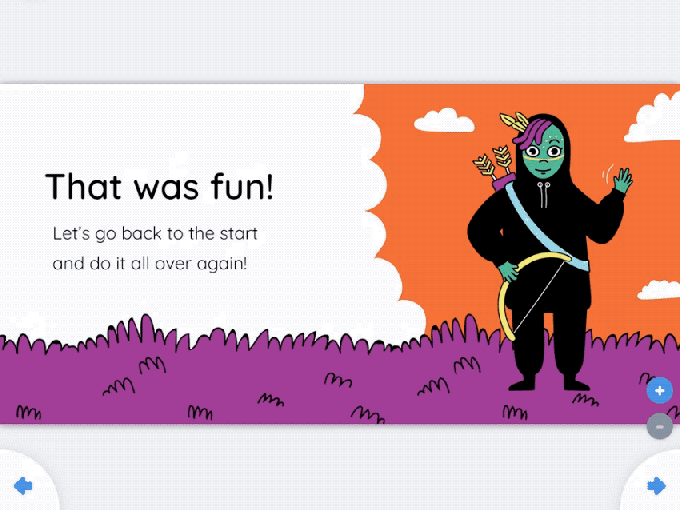


![[TechCrunch Article] Journey launches its real-time group ‘Peloton for Meditation’](https://images.squarespace-cdn.com/content/v1/5a73ebc649fc2b564f716b47/1557335532913-URH6GLGVAS9MVFR02FTO/Journey-Meditation-App-1.jpg)






